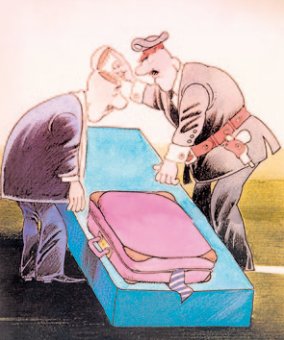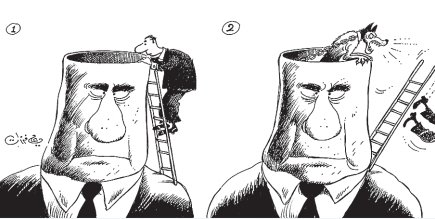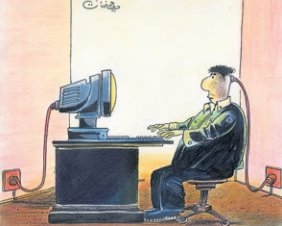[The following report was issued by the Prince Claus Fund Gallery on 19 July 2012.]
Culture in Defiance: Continuing Traditions of Satire, Art, and the Struggle for Freedom in Syria
Introduction: Laughter, Beauty and Human Resolve
Imagine leaving your home at a moment’s notice with some clothes, a few sketches and a CD filled with a handful of the twenty thousand political cartoons you had drawn over the past fifty years. In 2011, the Syrian cartoonist Ali Ferzat left Damascus under similar circumstances. After he recuperated from being badly attacked and having his hands broken, his family felt his life was in danger and urged him to flee. Ferzat, a 2002 Prince Claus Fund Laureate, joined the thousands of other Syrians who could no longer remain in their country due to the violence of the regime. The more than yearlong uprising against the dictatorship of Bashar Al-Assad has left countless people homeless either as refugees or political exiles.
For those of us who have had the opportunity of working, researching or spending time in Syria, and getting to know the people there, the current situation remains untenable. The exhibition Culture in Defiance: Continuing Traditions of Satire, Art and the Struggle for Freedom in Syria reveals an incredible outburst of creative dissent under extreme duress. Some, like Ferzat, started working during the long years of Hafez Assad; others like Masasit Mati, the group who produces the cyber puppet plays Top Goon: Diaries of a Little Dictator, only last year. The exhibition features a wealth of short films, animations, popular songs, graffiti, art, posters, and wise words from inspirational Syrians.
Our eponymous publication is less art catalogue and more in-depth study on cultural rebellion in Syria. Journalist Leen Zyiad writes about "revolution as carnival" and the cities and villages in the country that have been singing, dancing and performing for regime change in the Bakhtinian sense. A series of wide-ranging articles about music, theatre, poster making and cell-phone cinema consider cultural production, both as a reaction to the regime and as a tribute to the courage of the protestors who have been risking their lives.
Amer Mattar visits the artists’ collective art and freedom and contributes a piece on Freedom Graffiti Week Syria, alongside the photographer and street art specialist Pascal Zoghbi. Visual critic Donatella Della Ratta examines user-generated creativity in the "raised hands" campaign and artist Khalil Younes explains the influence of Goya in his depictions of the revolution. In a moving essay, human rights lawyer Razan Zaitouneh counts bodies – literally – while novelist Rafik Schami ponders death by Facebook.
In this issue, we also showcase impressive creative writing – with literary nonfiction in the poetic memoir of the revolution by Samar Yazbek, a chilling account of when the shabiha ("the thugs") took over Latakia by novelist Rosa Yassin Hassan, and Hama under the Assads by Manhal Alsarraj. There are insightful pronouncements on imprisonment and the simple pleasures of life, alongside the debut in English of the remarkable short story, First Safety Manoeuvre, by Aram Tahhan. Like the hundreds of Syrian artists and writers who produce their work about the revolution anonymously, both he and Leen Zyiad have been writing, editing and co-curating under pseudonyms.
Nonviolent resistance and the power of culture are recurrent themes in this bilingual edition in Arabic and English. So, how does one stand down dictatorship, mass killings, snipers and the deep depression of exile? To paraphrase the director Jameel from Top Goon, who also always appears masked in public, everything scary can be dealt with through laughter, beauty and human resolve.
[The following cartoons by Ali Ferzat are featured in "Ali Ferzat: In His Own Words" in Culture in Defiance.]



[Click here to download the full report.]